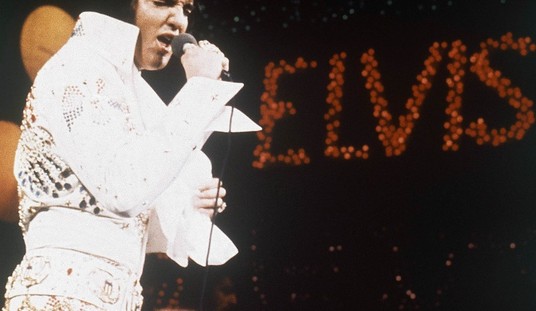I’m going to be traveling tomorrow, so I need to run some errands, pack for my trip, etc. In addition, my two alma maters, Notre Dame and USC, both have big games today (against Michigan and Ohio State, respectively), which I intend to watch. So I’m afraid I won’t be able to provide much Ike aftermath coverage this afternoon and evening.
I recommend the various blogs and local media outlets listed in my sidebar at right. Local sites like the Houston Chronicle staff blog and the CBS 11 and ABC 13 blogs have more and better coverage of the storm’s impact than I could possibly do anyway.
* * * * *
Meanwhile, on the issue of Ike’s weaker-than-expected storm surge — which was destructive but not cataclysmic — Alan Sullivan has a good initial wrap-up post, which he calls the “Lessons of Ike.” He writes:
Let’s talk about coastal flood modeling. That went badly wrong yesterday. I used a common sense analogy to help readers understand how the sea surface deforms during hurricanes with different characteristics. When a hurricane is tightly wound like Charley, striking near Fort Myers, Florida in 2004, its core pulls up the sea like a pimple. When a hurricane is broad and comparatively weak, like Ike yesterday, the surface of the ocean resembles a hive — swelling covers a much larger area, but it has no sharp peak. I don’t know how the forecast models are constructed. I am not a mathematician or a meteorologist. But if the output of a computer defies common sense, it’s usually wiser to ignore the computer.
He then proceeds to discuss the possibility of “built-in bias” in models “devised by and for the government that wants to keep everybody safe from everything.” I’m a bit skeptical of that aspect of his analysis. I would imagine the models are designed to be as accurate as possible, and any “bias” caused by the “nanny state mindset” would come in with the interpretation of the models and dissemination of the model data to the public (see, e.g., “certain death“). I’m certain that the flaw in the modeling, whatever it is, that led to this major error, will be studied and, if possible, corrected. Even taking the most cynical view, false alarms do not advance any “nanny state” agenda. They detract from it, in fact, since they tend to cause people to grow cynical and trust the government’s warnings less. Surely even the most “nannyish” bureaucrat understands that.
But Sullivan’s “common sense” approach definitely has merit. Keep in mind, Sullivan, like me, is not a meteorologist; he’s just an amateur weather buff who likes to blog about hurricanes. It’s difficult and risky to challenge a consensus as strong as yesterday’s “storm surge catastrophe” conventional wisdom, especially when you’re not an “expert,” and all the experts are convinced by the models. So Sullivan deserves a lot of credit for bucking the CW. I was looking at the very same “common sense” facts that he was, but I assumed the experts and models were right, and thus came to the opposite conclusion. I don’t think this was unreasonable on my part — but it was, as it turns out, wrong, whereas Sullivan was right. That counts for something. Indeed, if you’ll indulge me for a moment, allow me to put it in perspective:
Three years ago, I got a bunch of attention in the media for, supposedly, presciently “predicting” Hurricane Katrina’s impact on New Orleans. This made for a good storyline — the 23-year-old law student in Indiana saw it coming, and President Bush didn’t! — but it was mostly nonsense. As I tried repeatedly, and usually in vain, to explain to various reporters, I didn’t really “predict” anything, and certainly nothing unique or extraordinary. I said what everyone “in the know” was saying about the threat to New Orleans; I just said it loudly and repeatedly, got Instalanched, posted frequent and link-rich updates, and ultimately built quite an audience. Sure, I was ahead of the curve as compared to the MSM and some elements of the government, but that’s about as difficult as being the best football team in the ACC. And anyway, countless meteorologists, disaster planners, other bloggers, and assorted weather nuts were just as “ahead of the curve” as I was.
Sullivan’s coverage of Ike is a different story. He truly stuck his neck out, and saw what the pros failed to see — twice.
1. First, at a time when the experts were nearly unanimous that Ike still had an excellent chance of intensifying explosively into a high-end Category 3 or 4, Sullivan dissented. “This is not The Big One — except in size,” he wrote Wednesday evening, predicting a “category one or two” landfall. “If Ike can develop no more than it has over the Loop Current, it will not be spinning suddenly to category four, fifty miles off Galveston.”
On Thursday morning, while many others were still waiting for Ike’s circulation to tighten, and its winds to rise in reaction to its pressure drop the previous night, Sullivan predicted that the storm would retain the “weird” internal structure that was preventing such strengthening. “Hurricanes often develop distinctive individual characteristics and retain them through much of their cycle,” he wrote. He said he doubted the NHC’s “concern that this sprawling system might contract (and thus develop stronger winds) just as it approaches the coast” would come to fruition. “Ike’s damage may be considerable, but it will be scattered and not record-setting in any one locality, IMO.”
On Thursday afternoon, Sullivan called Ike “overhyped,” saying, “The inner core has dissipated. We now have an eyeless hurricane with greatest winds in a ring far from the center. This is not a configuration for strengthening. This is not The Big One.” Gradually, the consensus evolved, and came around to Sullivan’s position: Ike would not strengthen significantly before landfall. This proved true, of course. Ike came ashore as a Category 2 — not the Cat. 4 monster once envisioned by forecasters.
2. Sullivan made his second bold prediction on Friday morning, as experts began to propound a new fear: that Ike, although not a “major hurricane” according to the Saffir-Simpson scale, would nevertheless produce a catastrophic storm surge, more typical of a Category 4 storm. This fear, it should be noted, was not based on “hype” or “hysteria,” but rather, on raw data: an Integrated Kinetic Energy level rarely seen in recorded history, and SLOSH computer models that predicted a storm surge of 15-20 feet — even 25 or 30 feet in some spots — along the vulnerable Texas coast. But, again, Sullivan dissented from the direst of forecasts:
Extreme surge scenarios are being propounded for this storm. I suspect we will learn that they are excessive. Ike is too broad and weak to follow models based on the tight core structure of a normal hurricane. The danger will arise not so much from the height and speed of surge; but from its duration, and the immense wave heights built in the huge storm. I do not believe any location will be as severely affected as Mobile Bay in Katrina, where surge heights really did exceed twenty feet. But the lesser surge of Ike will be spread along a much greater length of coast. It will be very destructive.
Analogy: The elevation of ocean surface resembles a pimple in a typical hurricane. Ike’s deformation of the sea will resemble a hive — broader and flatter.
Sullivan urged evacuation of vulnerable coastal areas, but described the National Weather Service’s “certain death” pronouncement as “over the top.” He also rejected commenter Steve Sadlov’s comparisons of Ike to a Gulf of Alaska storm or, worse, the North Sea flood of 1953. “But… it’s not all piling up in one place,” Sullivan wrote. “Remember my analogy: this is a hive, not a pimple.” Even as the advance storm surge, hundreds of miles from the storm’s center, seemed to confirm everyone else’s worst fears, Sullivan stuck to his guns. “I still doubt the extreme projections for surge height,” he wrote at 2:06 PM yesterday. “People have never seen the ocean rise before a hurricane, but this is a storm in a class by itself.”
A couple of hours later, Sullivan did say that “we may be looking at the most expensive hurricane in history,” and his concern grew last night. “Galveston will probably be a total loss,” he wrote. But he added that he still wasn’t “buying” the direst scenarios. “The trouble,” he wrote, was not the height of the surge itself, but “the track: right front of eye coming straight at the mouth of Houston Ship Channel — at high tide.” As he later explained:
When it appeared for a few hours that landfall would be 20-30 miles SW of where it actually was — and I was fully persuaded of that — I was alarmed about Houston. This was the one place where I thought it was possible that model heights might be better justified. If the course of the eye had held NW for longer, onshore wind would have kept piling surge into the mouth of the bay, while flooding rains fell inland.
But as soon as it became apparent the eye was coming right over Galveston, that concern was alleviated.
Bottom line: Sullivan never bought into the computer model scenarios. He trusted his “common sense.” The rest of us trusted the models. We were wrong. He was right.
Importantly, Sullivan’s wrap-up post explicitly endorses the wisdom of evacuations, and chides those who failed to get out of harm’s way:
No matter what the controversies about models or codes, when a hurricane approaches, coastal residents should secure their property and leave, if they live in flood zones or flimsy buildings. What good is the security of a brick house, if it is only one story high, and water fills it to the ceiling? What protection is a mobile home on high ground, when the big pine blows on top of it?
This, too, is a matter of “common sense,” he says. Indeed.
Alas, those who would thoughtlessly deride prudent preparations and evacuations as an unnecessary byproduct of “hype” are sorely lacking in common sense — or any sense at all. Hurricane forecasting is an imprecise thing. Tiny, last-minute wobbles, like the one that spared Galveston Island and Galveston Bay the destruction that everyone (even Sullivan!) feared last night, cannot be predicted more than a few hours in advance. Perfection in forecasting is, and will always be, impossible. As a result, most alarms are false. This is true of necessity, and is unlikely to change anytime soon. It is a byproduct of our limited ability to precisely forecast the chaotic machinations of our atmosphere and our oceans.
Not every “false alarm” is purely “hype.” Very few are, in fact. Of course, even true threats can be overhyped — and, needless to say, media overhype is everpresent. But there is almost always a solid basis for actual evacuation orders, and Ike was no exception.
For what it’s worth, I stand by everything I have posted here regarding Ike. I believe the information I disseminated, and the warnings I relayed, were accurate and reasonable at the time I posted them. And that, as I know Sullivan would agree, is the only standard by which statements about hurricanes can be fairly evaluated: the standard of contemporaneous reasonableness, not 20/20 hindsight. I don’t believe my dire warnings about Ike’s potential were “hype,” so long as they are understood as just that: warnings about potential, not statements of certainties. (I admit, I became fairly convinced last night that Galveston’s utter destruction was a near-certainty. But so did Sullivan, and so did almost everyone else. That last-minute wobble was truly a godsend.)
It comes down to this: over the last several days, Alan and I looked at the same information and interpreted it differently. I think both interpretations were plausible, and I think I stated things reasonably. As it turns out, though, my interpretation (and nearly everyone else’s) was incorrect, and Sullivan’s was correct. So kudos to him. *tips cap*








Join the conversation as a VIP Member